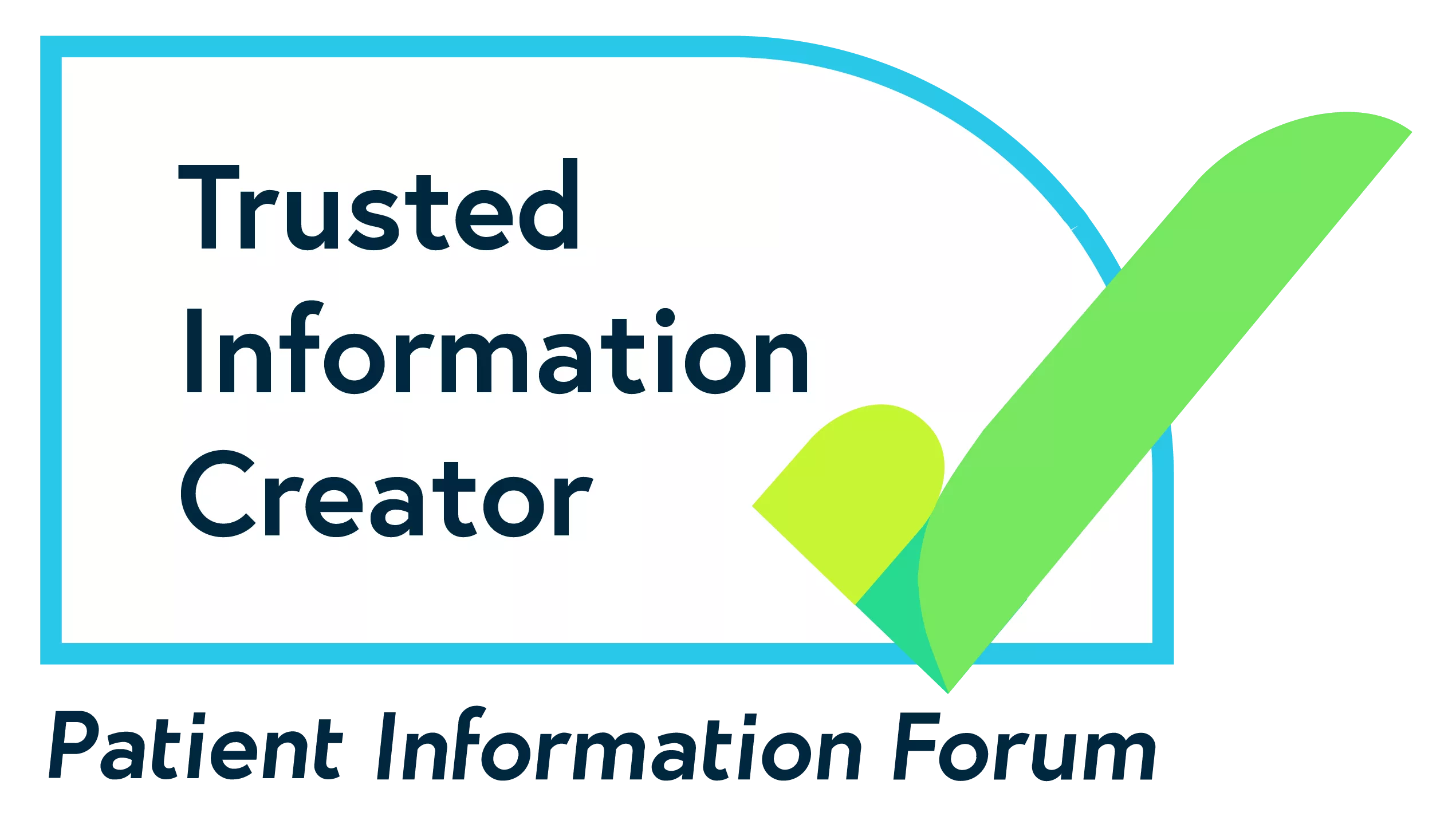What does being sectioned mean?
Being sectioned means that you are kept in hospital so you can get treatment and support for your mental health. A law called the Mental Health Act 1983 explains when and how this should happen.
Being sectioned is different to being an informal patient, which is when you agree to go into hospital. When you're sectioned, you have to go into hospital even if you don't want to, or you don't agree to being there. This is sometimes called being detained.
Sectioning is used to keep you safe and get you the treatment and support you need. But it's normal to feel scared, upset or angry if this happens to you.
Treatment and support glossary
Find explanation of words and phrases you may hear when you're sectioned, including legal terms.
When can I be sectioned?
You will only be sectioned if you're very unwell and doctors are worried that you're a risk to yourself or someone else.
Your doctors should always try to think of other ways to look after you first, like asking you to go into hospital as an informal patient.
Usually you'll only be sectioned if everything else the doctors have tried hasn't worked.
What happens before I can be sectioned?
Before you can be sectioned, a group of health professionals have to meet with you. They must all agree that you need to go into hospital to get treatment and support for your mental health problem.
You might hear this called an assessment or Mental Health Act Assessment.
Who decides if I need to be sectioned?
The team of health professionals who have to meet with you includes:
- An approved mental health professional (AMHP) – they're usually a specially trained social worker or nurse.
- 2 doctors – usually you will know at least 1 of the doctors.
At least 1 of these people should also be a specialist in children and young people's mental health.
What happens during the assessment?
When you see the AMHP, they should tell you who they are and why they're meeting with you.
They should also ask you if you want someone else, like your parent, carer or guardian to be with you while they talk to you. If you do, the AMHP should organise this for you. But sometimes, like in an emergency, they might not be able to do this.
The AMHP will ask you questions so they can decide whether you should be kept in hospital to get treatment for your mental health. There will also be 2 doctors who ask you some questions. This might happen at the same time, or you might see the doctors on their own.
If the team decides to section you, they should give you clear information to help you understand what's happening. They should also listen to your feelings and views, and answer all your questions.
It sounds a lot scarier than it actually was! It was basically just my normal doctor, a social worker and another doctor that I hadn't met before reading through my notes. Then they came into a room with me and my mum to ask me questions.
What do the different sections mean?
There are lots of different sections, and they all have different rules to keep you safe.
For some sections, you can ask the Mental Health Tribunal to end your section. To find out more, see our information on how to end your section.
The main sections you'll probably hear talked about are section 2 and section 3.
Section 2
This means you can be kept in hospital for up to 28 days so your care team can:
- Learn more about your mental health problem
- Understand what kind of treatments and support work for you
You can challenge your section at the Mental Health Tribunal and ask for it to be brought to an end. But you can only do this once, and you need to do this in the first 14 days.
If your care team still think you need treatment and support at the end of the 28 days, they might assess you to see if you should be put on a section 3.
Section 3
This means you can be kept in hospital for up to 6 months if it's the only way to provide you with treatment and support for your mental health problem.
Your section 3 can be extended for another 6 months, and then after that, every year. This will only happen if your responsible clinician thinks you still need treatment and support in hospital.
You can challenge your section at the Mental Health Tribunal once in the first 6 months, once in the second 6 months, and then once every year.
What does this mean?
This means that an AMHP and one doctor agree that you need to go into hospital as an emergency, while waiting for a second doctor to assess you and decide whether you need to be put on a section 2 or section 3.
How long does it last?
Up to 72 hours (three days).
Can I challenge my section at the Mental Health Tribunal?
No.
What does this mean?
This might also be called a ‘holding power’. It only applies to you if you’re an informal patient or staying in hospital for another reason.
It means your doctor says you need to stay in hospital while a decision is made about whether to put you on a section 2 or section 3.
How long does it last?
Up to 72 hours (three days).
Can I challenge my section at the Mental Health Tribunal?
No.
What does this mean?
This might also be called a ‘holding power’. It only applies if you’re already in hospital getting treatment as an informal patient.
It means a nurse can keep you on the ward for a short time, so arrangements can be made for a doctor to assess you to see if you need to stay for longer.
A nurse can only use this section if you’ve said that you want to leave the ward. Or if you’ve acted in a way that suggests you’re trying to leave the ward.
How long does it last?
Up to 6 hours.
Can I challenge my section at the Mental Health Tribunal?
No.
What does this mean?
This might also be called a guardianship. It means that someone is appointed to be your 'guardian' instead of you being sectioned and kept in hospital.
It's your guardian’s job to make sure you get support for your mental health outside of hospital. They can also make certain decisions about you. For example, they can decide where you live or make sure you go to important appointments
It can only be used if you’re 16 or above.
How long does it last?
6 months, but it can be extended.
Can I challenge my section at the Mental Health Tribunal?
Yes. You can do this once in the first 6 months, once in the second 6 months, then once every year.
What does this mean?
This is also called a Community Treatment Order, or CTO.
It means that your main doctor says you can live in the community, but you have to follow certain rules. These might include agreeing to see your doctor and taking medication.
You can only be put on a CTO if you have been on certain sections, like section 3 or section 37. You cannot be put on a CTO if you’ve only been on section 2.
How long does it last?
6 months, but it can be extended.
Can I challenge my section at the Mental Health Tribunal?
Yes. You can do this once in the first 6 months, once in the second 6 months, and then once every year.
What does this mean?
This means a judge in a court says you should go to hospital for treatment, rather than go to prison.
You can only be put on this section if you have been found guilty of a crime.
How long does it last?
6 months, but it can be extended.
Can I challenge my section at the Mental Health Tribunal?
Yes. You can’t do this in the first 6 months, but after that you can do it once in the second 6 months, and then once every year.
What does this mean?
If you’ve been put on a section 37, the judge can also put you on a section 41.
This is also called a ‘restriction order’. It means that you can only be discharged, moved to another hospital, or given leave with the permission of the Government.
A judge will only put you on a restriction order if they’re worried that you are a serious risk to other people.
How long does it last?
There is no fixed time limit.
Can I challenge my section at the Mental Health Tribunal?
Yes. You can’t do this in the first 6 months, but after that you can do it once in the second 6 months, and then once every year.
What does this mean?
This means that the Government wants to move you from prison to hospital, so you can get treatment for your mental health problem.
How long does it last?
6 months, but it can be extended.
Can I challenge my section at the Mental Health Tribunal?
Yes. You can do this once in the first 6 months, once in the second 6 months, and then once every year.
What does this mean?
This means the Government wants to move you from prison (if you’re awaiting trial) to hospital so you can get treatment for your mental health problem.
Or, it can mean the Government wants to move you from immigration detention to hospital so you can get treatment and support.
How long does it last?
6 months, but it can be extended.
Can I challenge my section at the Mental Health Tribunal?
Yes. You can do this once in the first 6 months, once in the second 6 months, and then once every year.
What does this mean?
If you’ve been put on a section 47, the Government can also put you on a section 49.
This is also called a ‘restriction direction’. It means that you can only be discharged, moved to another hospital, or given leave with permission of the Government.
How long does it last?
There is no fixed time limit.
Can I challenge my section at the Mental Health Tribunal?
Yes. You can do this once in the first 6 months, once in the second 6 months, and then once every year.
What does this mean?
If you’ve been put on a section 48, the Government can also put you on a section 49.
This is also called a ‘restriction direction’. It means that you can only be discharged, moved to another hospital, or given leave with permission of the Government.
How long does it last?
There is no fixed time limit.
Can I challenge my section at the Mental Health Tribunal?
Yes. You can do this once in the first 6 months, once in the second 6 months, and then once every year.
What does this mean?
You might hear this called a ‘police power’ or ‘police section’.
It means that if there are concerns about your mental health and safety, the police can go into your home and take you to a place of safety.
The police must be with a doctor and an AMHP.
The place of safety might be a hospital ward or a special room in a hospital. It could also be your home. It can never be a police cell.
How long does it last?
Usually for 24 hours (one day), but can be extended for another 12 hours.
Can I challenge my section at the Mental Health Tribunal?
No. But, if you’re not happy with how the police acted, you can make a complaint. Find out more on the Police Conduct website.
What does this mean?
You might hear this called a ‘police power’ or ‘police section’.
It’s usually used when you’re under section but you’re away from hospital without permission. It means the police can go into your home and take you back to hospital.
The police might be with a doctor or another mental health professional, but they don’t have to be.
Can I challenge my section at the Mental Health Tribunal?
No. But, if you’re not happy with how the police acted, you can make a complaint. Find out more on the Police Conduct website.
What does this mean?
You might hear this called a ‘police power’ or ‘police section’.
It means that if the police find you in a public place and they’re concerned about your mental health and safety, they can take you to a place of safety.
The place of safety might be a hospital ward or a special room in a hospital. It could also be your home. It can never be a police cell.
How long does it last?
Usually for 24 hours (one day), but can be continued for another 12 hours.
Can I challenge my section to the Mental Health Tribunal?
No. But, if you’re not happy with how the police acted, you can make a complaint. Find out more on the Police Conduct website.
When I was sectioned, it felt very much like something that was just happening to me, not something that I had involvement with.
What are my rights if I'm sectioned?
When you're sectioned, you'll have lots of the same rights as informal patients. This includes being able to:
- Carry on with your studies
- Be on a ward with people your own age
- Stay in touch with family and friends
- Have privacy
- Have some internet and phone access
- Keep your information confidential
For more information on these rights, see our page on being an informal patient.
Your right to a nearest relative
If you've been sectioned under section 2 or section 3, or you're on a Community Treatment Order (CTO), you will have something called a ‘nearest relative’.
Your nearest relative will usually be a parent, carer or guardian. But it could also be a brother or sister if they're over 18. Or it could be another family member, like a grandparent, aunt or uncle.
Your nearest relative is not the same thing as your next of kin, and you can't choose who they are – but it's normally someone you trust.
You nearest relative should usually be told if you're going to be sectioned. They can also:
- Say no to you being sectioned under a section 3
- Be given information about your treatment
- Ask for your section to end if you're on a section 2 or section 3
If you don't want information about your treatment and support to be shared with them, let your care team know.
My mum was very involved in my treatment and I was used to it.
Your right to information
You should be given information to help you understand what's happening to you and what your rights are. This should include information on:
- The section you're under and why you've been sectioned
- When you can be given treatment when you're sectioned
- How you can challenge your section – or ask for it to end
- How to get extra support from an advocate
Someone in your care team should explain the information to you and give you a physical copy, like a leaflet. You can also ask to see the information in a different language or Braille.
If you're not given this information, you can ask a member of your care team or an advocate to help you get it. If you're still not able to get the information, you can make a complaint.
Your right to have leave from the ward
Your responsible clinician has to give you permission to leave the ward. This is sometimes called section 17 leave.
Before your doctor will give you section 17 leave, they need to think about whether it's safe for you to go outside the ward.
When you're first sectioned, you might not have any leave. When your doctor first lets you have leave, they might only want you to leave the ward for a short time. You might also need to go with staff or with a trusted adult. Over time, your leave should build up, and you might be able to leave the ward overnight.
You can speak to your doctor about your leave at your ward round, or ask an advocate to help you. If you need leave urgently, you should speak to a member of your care team and ask them to get in touch with your doctor.
They explained that your leave might need to be stopped for a period of time depending on when how you're doing.
How do I make a complaint?
If you feel you haven't been treated fairly or you're unhappy about something that has happened on the ward, you can make a complaint.
You can ask the hospital about how to do this, and who you should make the complaint to.
Making a complaint can be a hard process to go through, especially when you're not feeling well. It can help to ask a trusted adult or advocate to help you.
You should try to make your complaint as soon as possible. Usually the time limit is 12 months from when the event happened or the problem started.
I didn't realise I still had a right to have my opinions heard on things like treatment or what was happening to me, even while it meant doctors had the final say.
How does my section end?
Your section might come to an end after a set period of time. Or your responsible clinician can end your section if they don't think you need it to keep safe anymore.
You can also ask for your section to end – this is known as challenging your section.
There are a few different ways you can challenge your section:
- Ask your nearest relative to apply for your section to end. If you doctor doesn't agree, then your section will carry on. If this happens, they could ask the hospital managers or the Mental Health Tribunal to end the section instead.
- Ask the hospital managers. They can hold a hearing to listen to you and your care team's views about why you shouldn't be sectioned. The hospital managers can end the section even if your doctor doesn't agree.
- Apply to the Mental Health Tribunal. The tribunal is a special court that is separate from the hospital. They have the power to end your section even if your doctor doesn't agree.
Your meeting with the hospital manager or the Mental Health Tribunal usually takes place in person, but it could be over the phone or by video call.
When your section comes to an end, you can stay in hospital if you still need treatment and support. This is called being an informal patient.
I had a conversation with my doctor and we were both in agreement about ending my section. There wasn't much to it.
What happens when I leave hospital?
Leaving hospital can feel like a very big step.
Before you go, your care team will want to make sure you're well enough to leave, and that there's support in place for you when you get home.
When you leave, you should be given:
- A discharge summary, which explains how long you were in hospital and how your recovery went while you were there.
- A care plan, which explains a bit about you and the care and support you need. This could include advice on what should happen if you're in crisis.
- Contact details for someone you can speak to if you think your mental health is getting worse.
You might also be asked to go back to the hospital for appointments, or have follow up appointments with Child and Adolescent Mental Health Services (CAMHS) or your doctor.
Mental Health Act 1983
This is a law that allows people to be sectioned if they have a mental health problem and need treatment. It applies to both England and Wales.
Visit our full treatment and support glossaryDetained
This is when you are kept somewhere, like in hospital, even if you haven’t agreed to it.
In mental health hospitals, you could be detained using a law called the Mental Health Act 1983. This is also called being sectioned.
See our page on being sectioned for more information.
Visit our full treatment and support glossaryVoluntary patient
You're a voluntary patient when you, or someone who looks after you, agree for you to stay in hospital to get treatment and support for your mental health. This is sometimes called being an informal patient.
See our page on being an informal patient for more information.
Visit our full treatment and support glossaryMental Health Act Assessment
This is when a group of health professionals meet with you to see if you need to go into hospital to get treatment and support for your mental health. If they all agree that you need to go into hospital, you could be sectioned. You may also hear this called an assessment.
Visit our full treatment and support glossaryApproved mental health professional (AMHP)
This is a specially trained social worker or nurse. They're responsible for arranging Mental Health Act Assessments. They’re also responsible for admitting you to hospital if you’re sectioned.
Visit our full treatment and support glossaryCare team
These are the people look after you when you're getting treatment and support for your mental health problem. Your care team might include nurses, doctors and therapists.
They may look after you in hospital, support you through Child and Adolescent Mental Health Services (CAMHS), or look after you at home.
Visit our full treatment and support glossaryResponsible clinician (RC)
This is the doctor in charge of your care when you’re sectioned.
Only your responsible clinician can make certain decisions, such as giving you leave. They’re also the only person in your care team who can end your section. Although, there are other ways you can end your section.
See our guide on being sectioned for more information.
Visit our full treatment and support glossaryGuardianship
When you're unwell, this is where someone is appointed to be your 'guardian' instead of you being sectioned and kept in hospital.
It's your guardian’s job to make sure you get support for your mental health outside of hospital. Your guardian can also make certain decisions about you. For example, they can decide where you live or make sure you go to important appointments.
You can only be put on a guardianship if you’re 16 or above and it’s essential for your safety or someone else’s.
Visit our full treatment and support glossaryCommunity Treatment Order (CTO)
This is when you’ve been discharged from hospital but you still need to follow certain rules. For example, taking medication or seeing your doctor. If you become unwell, you could be brought back to hospital.
You can only be put on a CTO if you’ve been on certain sections, like 3 or 37.
See our page on being sectioned for information about the different sections.
Visit our full treatment and support glossaryDischarge
This means your treatment at a hospital, clinic or other service is ending. You may be discharged because:
- you’ve completed your treatment
- you’re old enough to use a different service
- you’ve asked to leave
- the next part of your treatment needs to continue somewhere else.
Your care team should explain what this means, and what will happen if you need care in the future.
Visit our full treatment and support glossaryWard
This describes the area of the hospital you're staying in. You may also hear it called a unit.
Visit our full treatment and support glossaryAdvocate
An advocate is someone who can listen to you and help make sure your voice is heard in decisions about you.
In some situations, you will have a right to have an advocate. This is called statutory advocacy.
Even if you don’t have a right to an advocate, there are other types of advocacy that can support you to get your voice heard.
See our page on advocacy for more information.
Visit our full treatment and support glossaryCare plan
The name for a plan that explains your mental health problem, what treatment and support you need, and who will provide that support. Care plans might also cover what should happen if you're in a mental health crisis.
There are different types of plans, such as a Care Programme Approach (CPA) or Care and Treatment Plan (CTP). Whatever type of plan you have, you should always be given a copy of it.
Visit our full treatment and support glossaryMental Health Tribunal (MHT)
This is a special court that you can apply to when you’re sectioned. The Tribunal decides whether your section can end. They can also give advice about things like hospital leave, hospital transfers and being put on a Community Treatment Order (CTO).
In England, the Tribunal is called the Mental Health Tribunal. In Wales, the Tribunal is called the Mental Health Review Tribunal for Wales.
When you have a Tribunal hearing, three people make the decisions. These include:
- a judge
- a doctor
- someone with experience and expertise in that area of mental health – usually a social worker or nurse.
Section 17 leave
When you're sectioned, giving leave is when your main doctor gives you permission to have time away from the ward. They might set conditions or rules for your leave, like only being allowed to go out with a parent or carer.
Visit our full treatment and support glossaryHospital managers
Hospital managers are a group of people who are responsible for the use of the Mental Health Act 1983 in a hospital.
If you’re sectioned and you want your section to end, you can ask the hospital managers. They will hold a meeting and consider your case. They can decide to end your section even if your main doctor (known as your responsible clinician) doesn’t agree.
Visit our full treatment and support glossaryNearest relative
This is a family member who has certain responsibilities for you if you're sectioned or on a Community Treatment Order (CTO).
You nearest relative should usually be told if you’re going to be sectioned. They can also:
- say no to you being sectioned under a section 3
- be given information about your treatment
- ask for your section to end if you're on a section 2 or section 3.
You can’t choose who your nearest relative is. The Mental Health Act 1983 sets out a list of people who it can be. It’s usually the person who is highest up on this list:
- your mum or dad (usually whoever is oldest)
- your brother or sister (if they’re over 18)
- your grandparent
- your uncle or aunt.
Section 117 aftercare
Sometimes being sectioned gives you a legal right to support. If you have been sectioned under section 3, 37, 47 or 48, you have a right to support called section 117 aftercare.
Section 117 support will be personal to you, depending on what support you need to stop your mental health from getting worse. And your right to support doesn't end until your care team agree that you no longer need that support.
See our page on being sectioned for information about the different sections.
Visit our full treatment and support glossaryChild and Adolescent Mental Health Services (CAMHS)
These are services that support young people with their mental health.
You might see them called different names sometimes, but they offer the same type of services for young people:
- In Wales, they're called Specialist Child and Adolescent Mental Health Services (SCAMHS)
- In England or Wales, you might also hear them called Children and Young People’s Mental Health Services (CYPMHS)
Find out more in our CAMHS information hub.
Discharge summary
This is a report completed by your hospital care team when you are discharged from hospital. It should explain any diagnosis you have and summarise the care and treatment you’ve had in hospital.
Visit our full treatment and support glossaryConfidentiality
Confidentiality is about keeping your information private.
It means that when you talk to professionals they shouldn’t tell anyone else what you’ve said.
They will only share what you tell them in certain situations. For example, if you ask them to or if they’re worried that you or someone else could be in danger.
See our page on confidentiality for more information.
Visit our full treatment and support glossaryRights
Rights generally exist to protect and help us. If you have a right or the rights to something in everyday life, it means you're entitled to have it or do it. Our rights are often set out in laws, like the Equality Act 2010. Sometimes, rights might be set out in other policies and guidelines.
Some rights can never lawfully be taken away from us. However, sometimes another law can interfere with or restrict our rights, like if we are arrested or sectioned.
For more information, see our page on your rights.
Visit our full treatment and support glossaryThis information was published in December 2020. We will revise it in 2023.
The quotes on this page are from young people we spoke to while making this information. They've given us their consent to use their quotes in our information. The words, experiences and opinions in the quotes are not related to the young people shown in any of the photographs we use.
References are available on request. If you would like to reproduce any of this information, see our page on permissions and licensing.













